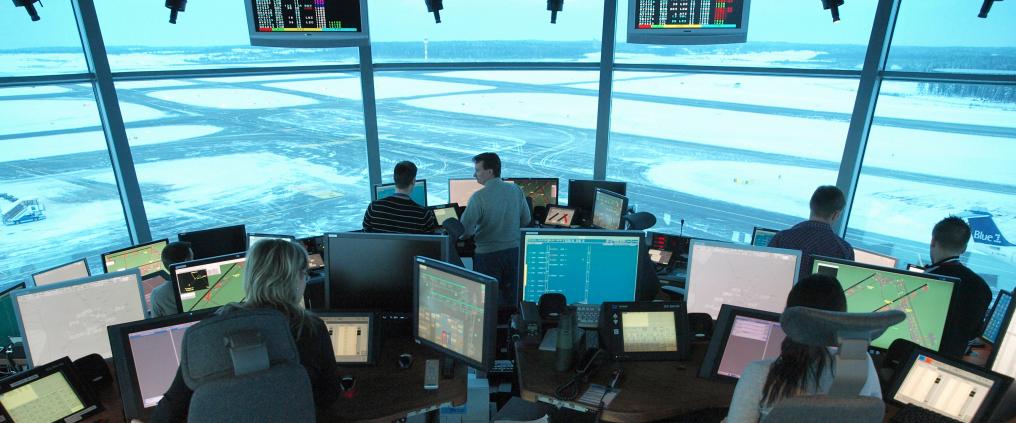Air traffic controllers work hard to keep control of our airspace, but are much less seldom in the spotlight of attention compared to pilots. Still, they play an extremely critical part in ensuring the safety of air travel.
Here are some facts that you may not have known about air traffic control’s work.
1. Air traffic control uses nautical measurement units
The main task of air traffic controllers is to separate flights – in other words, to make sure that the aircrafts whizzing through the skies don’t crash into each other. The distances between planes are measured in nautical measurement units according to the international standard.
“The safety distance between aircrafts is at least 1000 feet (300 meters) vertically and aircrafts travelling at the same altitude need at least three nautical miles (about 5,7 km) between them. The minimum distance cannot be breached, and during poor weather conditions longer distances are needed,” says Karri Hannula from Helsinki Airport’s air traffic control.
2. There are three different types of air traffic controls – only some are located in the tower
The tower control guides the departures and arrivals of flights as well as the movements of various vehicles on the ground within the control area. Tower controllers conduct the events at the airport from within the high-rising control tower.
Before planes can come within landing distance of the airport, they are directed by the approach control, which makes sure that landings are spaced out sufficiently. This part of the air control sits in its own air traffic control room at the Helsinki Airport.
Area control, then, is responsible for a specific region of airspace. In Finland, the area control facilities is currently located also in Tampere in addition to the Helsinki Airport.
3. Airspace is not free
Throughout an entire flight, passenger planes are instructed by different air traffic control centers located in different countries. Airlines must also pay fees for the use of airspace. “Each country has its own price. Airlines pay for both the air traffic control services and the airspace. In Finland, for example, we made about 19 million Euros revenue from flights crossing the Finnish airspace in 2015,” Hannula says.
Helsinki is the least expensive European Hub. Charges at Helsinki Airport are among the lowest of main airports in Europe.
4. Despite digitalization, air traffic control works mainly over radio
An air traffic controller can see the location and route of all planes within their area of responsibility on their radar screen. Based on this, they can separate flights over radiophones by giving each aircraft a speed, direction and altitude at which it can go forward. There is no automated machine to calculate these; the air traffic controller estimates them, but an automatic safety net is built into the system for cases where the minimum distances are threatened.
“All other aircrafts within the same radio frequency can hear what the other aircrafts are told and have good situational awareness,” Hannula explains.
“The route clearance for departing flights is given to newer planes through a data link connection, but otherwise the air traffic control gives directions over radio frequencies.”
5. The most challenging parts are fluctuating weather conditions and situations
Although air traffic control has a responsible role in ensuring passenger safety, Hannula ensures that for professionals the job is not too stressful.
“One needs to have good tolerance for stress, as neither flights nor the weather will stop and wait for air traffic control to gather itself,” Hannula says. “We do have good tools and training, however, so our air traffic controllers always know what to do.”
“The most challenging situations are rapidly changing conditions: in the summer, fast approaching thunder can spin the wind around 360 degrees, or in the winter the runway can suddenly be frozen over. These cause changes that you need to be able to react to swiftly.”
Finavia's WebTrak Service provides detailed information about aircraft location, altitude and type at an approximate distance of 70 km from Helsinki Airport.



